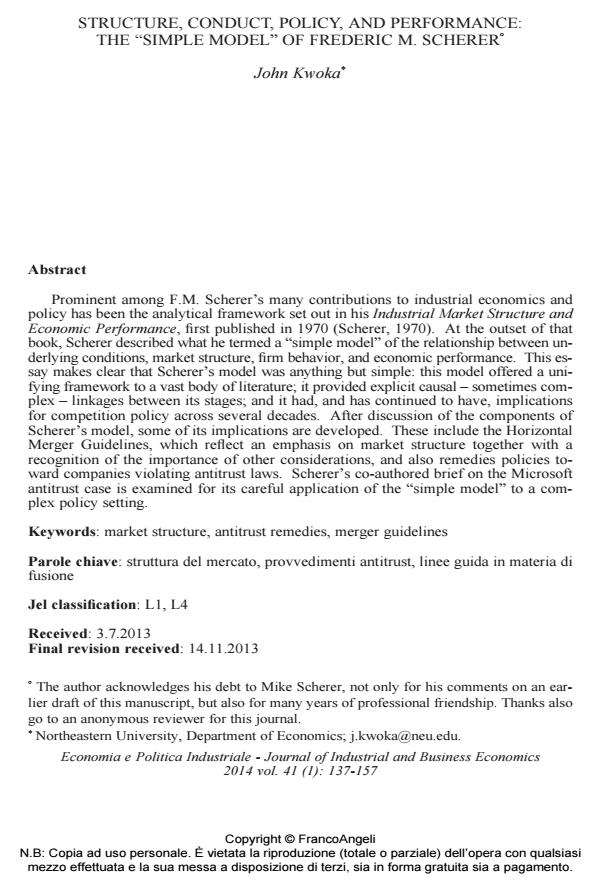Structure, conduct, policy, and performance: the "simple model" of Frederic M. Scherer
Journal title ECONOMIA E POLITICA INDUSTRIALE
Author/s John Kwoka
Publishing Year 2014 Issue 2014/1
Language English Pages 21 P. 137-157 File size 285 KB
DOI 10.3280/POLI2014-001008
DOI is like a bar code for intellectual property: to have more infomation
click here
Below, you can see the article first page
If you want to buy this article in PDF format, you can do it, following the instructions to buy download credits

FrancoAngeli is member of Publishers International Linking Association, Inc (PILA), a not-for-profit association which run the CrossRef service enabling links to and from online scholarly content.
Prominent among F.M. Scherer’s many contributions to industrial economics and policy has been the analytical framework set out in his Industrial Market Structure and Economic Performance, first published in 1970 (Scherer, 1970). At the outset of that book, Scherer described what he termed a "simple model" of the relationship between underlying conditions, market structure, firm behavior, and economic performance. This essay makes clear that Scherer’s model was anything but simple: this model offered a unifying framework to a vast body of literature; it provided explicit causal - sometimes complex - linkages between its stages; and it had, and has continued to have, implications for competition policy across several decades. After discussion of the components of Scherer’s model, some of its implications are developed. These include the Horizontal Merger Guidelines, which reflect an emphasis on market structure together with a recognition of the importance of other considerations, and also remedies policies toward companies violating antitrust laws. Scherer’s co-authored brief on the Microsoft antitrust case is examined for its careful application of the "simple model" to a complex policy setting.
Keywords: Market structure, antitrust remedies, merger guidelines
Jel codes: L1, L4
- History, statistics and theory: Frederic M. Scherer and modern industrial organization Giovanni B. Ramello, Francesco Silva, in ECONOMIA E POLITICA INDUSTRIALE 1/2014 pp.5
DOI: 10.3280/POLI2014-001001
John Kwoka, Structure, conduct, policy, and performance: the "simple model" of Frederic M. Scherer in "ECONOMIA E POLITICA INDUSTRIALE " 1/2014, pp 137-157, DOI: 10.3280/POLI2014-001008